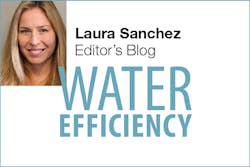Consumer Mistrust Is the Message in the Bottle
For the first time ever, sales of bottled water exceeded soda in 2016, with a total of 49.4 billion bottles sold in the US. According to the New York Times, that means that Americans drank almost 12 billion gallons of bottled water last year, or more than 36 gallons per person.
And we paid dearly for the hydration. Studies show that bottled water costs around 2,000 times more than drinking water from the tap. Why are Americans spending so much money on a product that’s already delivered to their doorstep?
Whether bubbly, flat, flavored, filtered, or electrolyte-enhanced, bottled water is a thriving market—and one fueled by both extensive marketing campaigns and water safety concerns. According to Money magazine, the largest US bottled water companies—Nestle Water, Coca-Cola, Dr. Pepper—indicate that cases of lead contamination in Flint, Michigan, Washington, DC, and New Jersey have boosted water sales by raising concern about the quality of tap water and focusing the nation’s attention on its decaying pipes.
In fact, consumer surveys show that many citizens don’t feel that they have a choice besides purchasing bottled water. Boil notices and contamination events have led them to fear the water that comes out of their taps. And consumers often believe that bottled water is free of microorganisms, even though research indicates that the process of bottling water and storing it on market shelves can actually facilitate microbial growth. “People feeling unsafe about their drinking water clearly leads them to drink it out of a bottle,” Ali Dibadj, a consumer analyst at Sanford C. Bernstein & Co., told Bloomberg. The message in the bottle is one of mistrust.
How can the industry go about regaining consumer trust? At the 2016 OneWater Summit in Atlanta last June, Radhika Fox, CEO of the US Water Alliance, touched on the subject during her keynote presentation. She invited industry members to demonstrate confidence by drinking tap water themselves. Others advocated reminding the public that tap water is regulated and tested, and encouraging water customers to review their utility’s Consumer Confidence Report.
Since then, journalists have also voiced the detriments of bottled water, including the extensive environmental costs, in an array of news stories. Making plastic water bottles results in carbon emissions and uses about 17 million barrels of oil annually according to Ecology.com. One interactive article by Tatiana Schlossberg (formatted as a quiz) about plastic water bottle usage is especially effective in revealing staggering statistics about our plastic habit and its effects on the planet.
Globally, people spend around $100 billion a year on bottled water. Americans account for well over half of that. It’s time for water professionals to look at what the popularity of bottled water telling us. What steps do you suggest that the industry takes in order to regain consumer trust?
